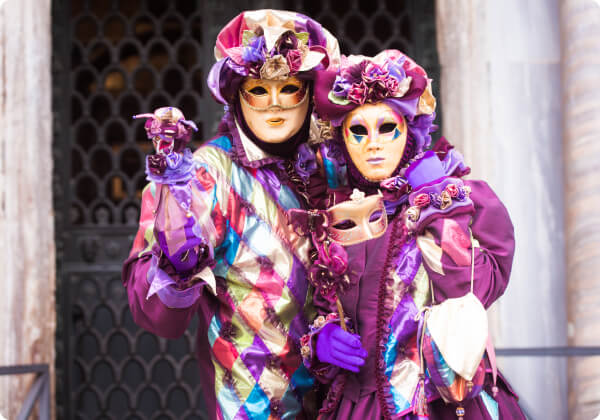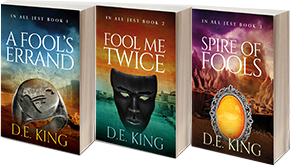Clothing
From the telltale fool’s hat down to their breeches, what actually makes up the jester’s costume? Jesters have been colourful figures throughout history and from the wandering comics to the royal court fools, costumes have always been a significant part of the jester persona.

Looking for Jester Clothing or Costumes to Buy?
The court jester was an intriguing character and often had the ear of the reigning kings and queens. While costumes varied from jester to jester, there is some commonality seen throughout the ages.
The typical jester’s costume consisted of a motley coat, tight breeches and a cap’n’bells or monk’s cowl over their head, which was often shaved. Their motley costume would usually have two or more bright colours, symbolising their opposing role to others at court. While nobles and royalty had a certain role to play and dress code to follow, the jester was a figure of humour, wit, and free speech, often jibing prominent members of the court.
The court jester often had props and accessories to complete their costume, from fake swords to sceptres or baubles. These props would enhance their comedic routine and assist in their mockery of court characters.
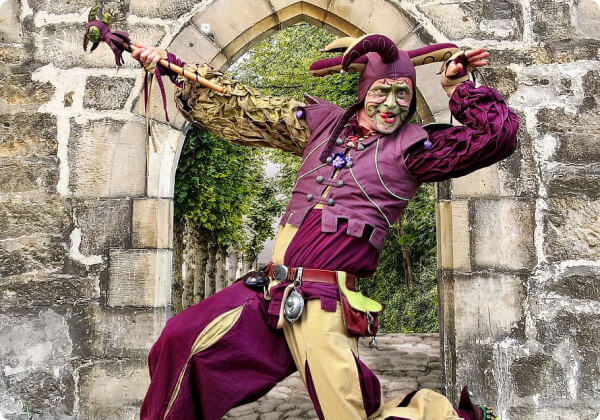
Image by Momentmal from Pixabay
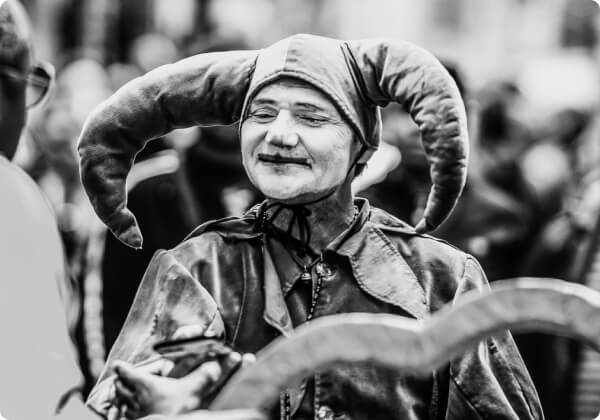
Jesters were buffoons, jugglers, actors, entertainers, and more. Their role consisted of delivering jokes to other duties such as delivering messages, and their clothing was a significant part of this.
As the jester existed outside of the rules of typical court manners, their costume became a symbol for mockery, satire, and the dual nature of this role. The court jester was often left to deliver news to the monarch and their colourful character often helped them. A jester would deliver bad news with a joke and good news with harsh satire, making their motley outfit befitting their two sides.
Across the various types of jesters, their clothing is seen as an important part of who they were and what they represented.
The jester’s outfit would not be complete without their hat. Jesters often used their clothing to amplify their ridiculous behaviour, and the jester’s hat was a vital part of the buffoon’s role.
Both professional jesters and the natural fool are often seen in paintings and art with elaborate costumes involving masks, props, and their telltale hats. These comic actors are easily spotted thanks to their colourful and unusual outfits.
There were several distinct types of jester’s hats that kept to the tradition of the entertainer’s role.
Not all jesters had complete freedom however, for some the role of a personal jester required them to wear whatever their master wished. In the case of Jane the Fool, a personal jester during Tudor times, she was required to shave her head and wear a cap.
Cap’n’bells
The fool’s cap or cap’n’bells was a floppy hat with two or three points and bells sewn onto the ends. Mediaeval jesters used these bells to herald their arrival and attract the attention of everyone in the room.
These fools used the bells to create a comedic effect and entertain onlookers. Many jesters also added bells to their sleeves or shoes and to create more sound effects.
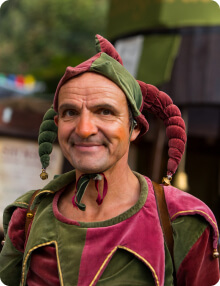
Monk’s Cowl
A monk’s cowl is a hooded garment that covers the head, neck and shoulders. Originally worn by religious monks for both men and women, the jester appropriated this garment as part of their jester’s costume.
Jesters wore colourful and motley monk’s cowls, and some early fools would attach a cockscomb crest or donkey ears accompanied with a tail to complete their attire.
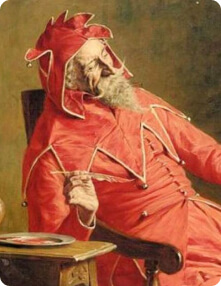
The Court Jester | John Watson Nicol 1895
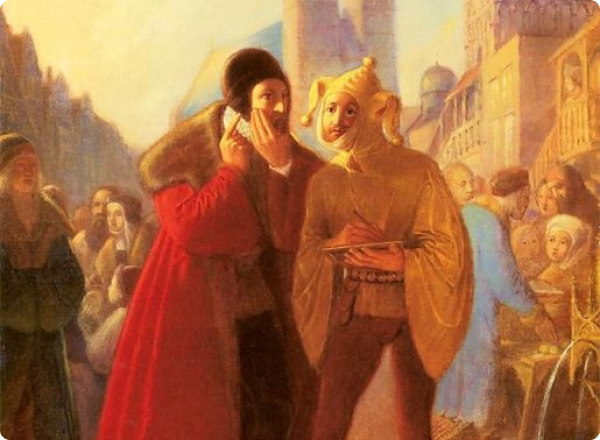
Zeby Stanczyka | Jan Matejko (circa 1860-80)
Throughout history, certain famous jesters have left an indelible mark with their unique costumes, showcasing their wit and individuality.
Jane the Fool, a personal jester during Tudor times, adhered to a unique tradition. Required to shave her head and wear a cap’n’bells, Jane’s appearance defied conventional expectations. The juxtaposition of her shaven head and vibrant cap’n’bells challenged societal norms, emphasising the jester’s role as a disruptor of conventions.
Not all fools wore the cap’n’bells or telltale motley shades as a part of their jester costume. Mathurine la Folle was a female jester who spent her time at French court. History tells that Mathurine wore an Amazon jester costume as her signature.
While some famous figures such as Triboulet or Stanczyk are shown in art to be wearing vibrant reds and sporting sceptres and jester hats, each jester of history seemed to have their own knack for creating flare.
From the earliest jesters to jongleurs and clowns, clothing has always been a significant part of the fool’s character. There are many parts of the modern jester or clown that had origins in historical fools.
The clothing of the jester has impacted today’s entertainers and fools, passing on the tradition of brightly coloured clothing, humorous props and of course their wit. The role of the actor and entertainer can be seen in its roots in the Commedia dell’arte, a popular act for many European jester groups during the 16th and 18th centuries. These acts would involve colourful costumes and the use of elaborate masks to enhance their performances. Modern examples of this jester’s act can be seen in theatre, musicals or even at the carnival to this day.
For many modern jesters and clowns, they still utilise motley clothing and fool’s caps to entertain crowds and get a laugh out of people, carrying on the traditions of the renaissance and Middle Ages.
